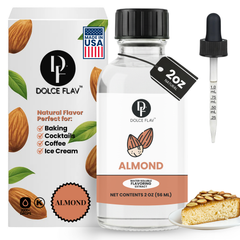
Acids play a crucial role in the world of gummy candies. They not only contribute to the tartness and flavor complexity but also play a significant role in achieving the desired texture. Different acids can impart distinct characteristics to gummies, ranging from mild and tangy to intensely sour. If you're curious about the various acids used in gummy recipes and how they affect the final product, you've come to the right place. In this comprehensive guide, we'll explore the different acids commonly used in gummy recipes, their effects on texture and flavor, and considerations for incorporating them into your homemade creations.
The Role of Acids in Gummy Recipes
Acids serve multiple purposes in gummy recipes. Firstly, they provide the characteristic tangy or sour taste that balances the sweetness of the candy. Secondly, acids play a vital role in the gelling process, helping to activate the gelling agents and set the gummy texture. They interact with the gelatin or other gelling agents, creating the desired structure and chewiness in the final product. Choosing the right acid is crucial to achieving the perfect balance of flavor and texture in your gummies.
There are several different acids that can be used in gummy candy recipes to add flavor, improve texture, and prevent spoilage. Some common acids used in gummy candy recipes include:
-
Citric acid: Citric acid is a common food acid that is derived from citrus fruits. It is used to add a tart, sour flavor to gummy candy and can also help improve the texture by providing some firmness and elasticity.
-
Malic acid: Malic acid is another common food acid that is derived from apples and other fruits. It is used to add a tart, sour flavor to gummy candy and can also help improve the texture by providing some firmness and elasticity.
-
Ascorbic acid: Ascorbic acid, also known as vitamin C, is a food acid that is used to add flavor and prevent spoilage in gummy candy. It can also help improve the texture by providing some firmness and elasticity.
-
Tartaric acid: Tartaric acid is a food acid that is derived from grapes and other fruits. It is used to add a tart, sour flavor to gummy candy and can also help improve the texture by providing some firmness and elasticity.
Overall, the type of acid that is used in a gummy candy recipe will depend on the desired flavor profile and texture, as well as the specific ingredients and equipment that are available. Experimenting with different acids can be a fun and rewarding way to create unique and delicious gummy candy recipes.
Which is better citric acid or malic acid?
Both citric acid and malic acid are common food acids that can be used in gummy candy recipes to add flavor, improve texture, and prevent spoilage. However, which acid is better will depend on the specific application and the desired flavor profile. Here are some key differences between citric acid and malic acid:
-
Flavor: Citric acid has a sharp, tart, and citrusy flavor, while malic acid has a slightly sweeter, fruity flavor.
-
Texture: Citric acid can provide a firmer and more elastic texture to gummy candy, while malic acid can provide a softer and more gummy texture.
-
Availability: Citric acid is more widely available and less expensive than malic acid.
Ultimately, the choice between citric acid and malic acid will depend on the specific needs and preferences of the recipe. Both acids can be used effectively in gummy candy recipes, and it is often possible to use them in combination to achieve the desired flavor and texture.
What's the difference between malic and citric acid?
Malic acid and citric acid are both common food acids that are used to add flavor, improve texture, and prevent spoilage in a variety of products, including gummy candy. However, there are some key differences between the two acids:
-
Origin: Malic acid is derived from apples and other fruits, while citric acid is derived from citrus fruits.
-
Texture: Malic acid can provide a softer and more gummy texture to gummy candy, while citric acid can provide a firmer and more elastic texture.
-
Availability: Citric acid is more widely available and less expensive than malic acid.
What are some similarities between citric and malic acid?
Both malic acid and citric acid are organic acid compounds. They can be categorized as carboxylic acids because they have carboxylic groups (-COOH groups). Both these acids are responsible for the sour taste in certain fruits. Therefore, these compounds are useful as food additives as well
Is malic or citric acid more acidic?
Malic acid and citric acid are both food acids that are used to add flavor, improve texture, and prevent spoilage in a variety of products, including gummy candy. In terms of acidity, citric acid is generally considered to be more acidic than malic acid.
Citric acid has a pH of around 2.2, which makes it a relatively strong acid. Malic acid has a pH of around 3.4, which makes it a weaker acid. The difference in acidity between the two acids is due to the fact that citric acid contains three carboxyl groups, while malic acid contains only two.
While both citric acid and malic acid can be used effectively in gummy candy recipes, the choice between the two will depend on the specific needs and preferences of the recipe. Citric acid may be preferred in applications where a strong, tart flavor is desired, while malic acid may be preferred in applications where a slightly sweeter, fruity flavor is desired. It is also possible to use a combination of both acids to achieve the desired flavor and texture.
Common Citric Acid Uses
Citric acid has many uses in food. It serves as a flavor enhancer, a pH regulator, and as a preservative.
Citric acid and its salts also help prevent crystallization in honey, are used in clarifying fruit juices and to stabilize spices. Citric acid is most often used in beverages. In fact, about 65 percent of citric acid consumed is used in drinks. You’ll commonly find it in carbonated drinks. It’s also common in wine coolers, cocktail mixers and iced tea. You’ll also find it in candy, dried fruit, canned fruit, jams and jellies and gelatin.
Common Malic Acid Uses
Malic acid is primarily used in fruit-flavored drinks. It stabilizes their color and also enhances flavor. For example, it’s commonly found in low-calorie drinks, where it masks the off-flavor of artificial sweeteners. You’ll also find it in cider and apple-flavored drinks, candy, gum, fruit butters and jams and jellies.
What Kinds of Acids Does Sour Candy Have?
Sour candy is a type of confectionery that is characterized by its tangy, acidic flavor. To achieve this flavor, sour candy typically contains one or more food acids, which are added to the candy recipe to provide sourness and balance the sweetness of the candy. Some common acids used in sour candy include:
- Citric acid: Citric acid is a common food acid that is derived from citrus fruits. It has a sharp, tart, and citrusy flavor and is often used to add sourness to sour candy.
- Malic acid: Malic acid is another common food acid that is derived from apples and other fruits. It has a slightly sweeter, fruity flavor and is also used to add sourness to sour candy.
- Ascorbic acid: Ascorbic acid, also known as vitamin C, is a food acid that is used to add flavor and prevent spoilage in sour candy. It has a tart, sour flavor and is often used in combination with other acids to balance the sweetness of the candy.
- Tartaric acid: Tartaric acid is a food acid that is derived from grapes and other fruits. It has a tart, sour flavor and is also used to add sourness to sour candy.
What flavors pair well with Citric Acid?
Citric acid is a common food acid that is derived from citrus fruits and has a sharp, tart, and citrusy flavor. It is often used to add sourness and balance the sweetness of a variety of foods and drinks, including candy, soda, and cocktails. Some flavors that pair well with citric acid include:
- Citrus flavors: Citric acid pairs well with other citrus flavors, such as lemon, lime, and orange.
- Fruity flavors: Citric acid can also be used to enhance the flavor of other fruit-based ingredients, such as berries, apples, and pears.
- Spices: Citric acid can also be used to complement the flavors of certain spices, such as ginger and cardamom.
- Herbs: Citric acid can be used to bring out the flavors of certain herbs, such as mint and basil.
Overall, the best flavors to pair with citric acid will depend on the specific needs and preferences of the recipe. Experimenting with different flavor combinations can be a fun and rewarding way to create unique and delicious dishes and drinks.
What flavors pair well with Malic Acid?
Malic acid is a food acid that is derived from apples and other fruits and has a slightly sweeter, fruity flavor. It is often used to add sourness and balance the sweetness of a variety of foods and drinks, including candy, soda, and cocktails. Some flavors that pair well with malic acid include:
-
Fruity flavors: Malic acid pairs well with other fruit-based ingredients, such as berries, apples, and pears.
-
Citrus flavors: Malic acid can also be used to enhance the flavor of citrus ingredients, such as lemon, lime, and orange.
-
Spices: Malic acid can also be used to complement the flavors of certain spices, such as cinnamon and cloves.
-
Herbs: Malic acid can be used to bring out the flavors of certain herbs, such as mint and basil.
What flavors pair well with Tartaric Acid?
Tartaric acid is a food acid that is derived from grapes and other fruits and has a tart, sour flavor. It is often used to add sourness and balance the sweetness of a variety of foods and drinks, including candy, soda, and cocktails. Some flavors that pair well with tartaric acid include:
-
Fruity flavors: Tartaric acid pairs well with other fruit-based ingredients, such as berries, apples, and pears.
-
Citrus flavors: Tartaric acid can also be used to enhance the flavor of citrus ingredients, such as lemon, lime, and orange.
-
Spices: Tartaric acid can also be used to complement the flavors of certain spices, such as cinnamon and cloves.
-
Herbs: Tartaric acid can be used to bring out the flavors of certain herbs, such as mint and basil.
Effects on Texture and Flavor
Different acids can have varying effects on the texture and flavor of gummies. Citric acid, for example, not only provides sourness but also helps in activating the gelling agents, resulting in a firm and chewy texture. Malic acid intensifies the sourness and can contribute to a mouth-puckering sensation. Tartaric acid adds a sharp tang and can enhance the overall fruitiness of the gummies. Lactic acid, with its milder acidity, allows the fruit flavors to shine without overwhelming the taste buds.
Considerations for Using Different Acids
When using different acids in gummy recipes, it's important to consider a few factors. Firstly, start with small quantities and adjust to taste, as different acids have different levels of acidity. Secondly, be mindful of any potential allergies or sensitivities to specific acids. Additionally, consider the flavor profile you want to achieve and select the acid that complements your desired taste. Lastly, follow the recommended usage rates provided by reputable sources or product manufacturers to ensure optimal results.
Alternative Options for Adding Acidity
If you prefer to avoid using acids or are looking for alternative options, there are natural ingredients that can add acidity to your gummies.






